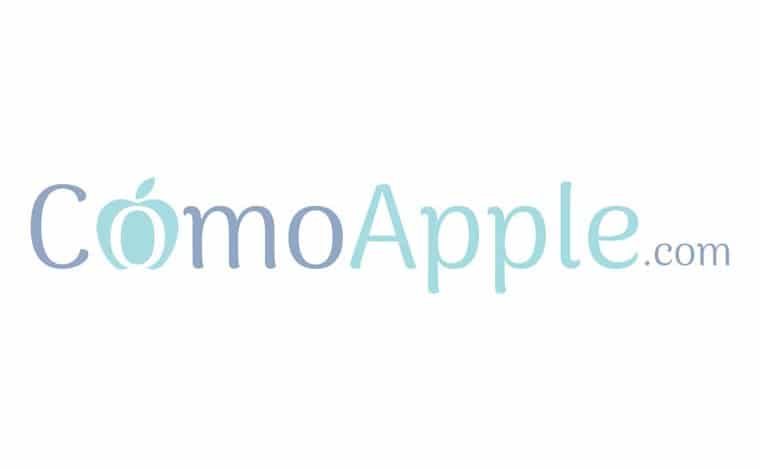
Likewise, how do I restore my macOS X El Capitan to factory settings? Open System Preferences. Click on System Preferences in the menu bar at the top of your screen. Click on Erase All Content and Settings.
Also, how do I reinstall OS X El Capitan on my Macbook Pro?
- Restart your computer, and immediately hold down command-r until the gray Apple logo appears.
- If prompted, select your main language and then click the arrow.
- Click Reinstall OS X, and then Continue.
Also know, why can’t I reinstall macOS X El Capitan? Using the Apple Toolbar, shut down your Mac before closing it. Immediately after restarting your Mac, hold the Command, Option, P, and R buttons on your keyboard. Your Mac will now restart as usual after you disable the two buttons.
Subsequently, how do I restore my Macbook Pro to its original operating system?
- Start up your Mac and immediately hold down Command + R.
- Continue holding both keys until you see the Apple logo or a spinning globe.
- When you see the Utilities window choose Restore from Time Machine Backup and click on Continue.
- Click Continue again.
Turn on your Mac and immediately press and hold these four keys together: Option, Command, P and R. Release the keys after about 20 seconds. This will clear user settings from the memory and restore certain security features that may have been altered previously.
How do I factory reset my MacBook Pro 2012?
To do so, shut down your Mac, then turn it on and immediately press and hold four keys together: Option, Command, P, and R. You can release the keys after 20 seconds or so. That’s it! Your Mac’s NVRAM has been reset.
How do I wipe my Mac and reinstall?
Restart your Mac. Choose Apple menu > Shut Down, press and hold the power button until “Loading startup options” appears, select Options, click Continue, then follow the onscreen instructions. In the Recovery app window, select Reinstall for your macOS release, click Continue, then follow the onscreen instructions.
How do I make a boot disk for El Capitan?
- Connect the USB flash drive to your Mac.
- Give the flash drive an appropriate name.
- Launch Terminal, located in /Applications/Utilities/.
- In the Terminal window, enter the following command:
- Input your Apple computer password in the password prompt.
How do I reinstall Macintosh HD?
As your computer is restarting, hold down the Command + R keys. Keep holding them down until you see the Apple logo appear on your screen. When the Apple logo appears, release the command and R keys. When you are in recovery mode, click Reinstall macOS and then click continue.
Is El Capitan still supported?
macOS El Capitan no longer supported by Apple El Capitan was replaced by Sierra 10.12, High Sierra 10.13 and the current release, macOS 10.14 Mojave. As a result SCS Computing Facilities (SCSCF) is phasing out software support for all computers running macOS 10.11 El Capitan and will end support on October 31, 2019.
Can I go back to my old Mac operating system?
Assuming your Mac originally came with an older version of macOS installed on it, downgrading is fairly easy. You can use the built-in macOS Recovery tool to downgrade. Just make sure you have internet access during the installation, as the software will download a previous version of macOS.
Does reinstalling macOS delete everything?
macOS Reinstallation Deletes Everything, What Can I Do Reinstalling macOS of macOS Recovery can help you replace the current problematic OS with a clean version quickly and easily. Technically speaking, simply reinstalling macOS won’t erase your disk either delete files.
How do I Format a macOS?
Hold down the Command and R keys as soon as you hear the Mac tone indicating a reboot. Wait for the macOS Utilities screen to appear, then click Disk Utility. Choose your Mac’s system drive, usually named Macintosh HD, then click Erase. Select the Format option Mac Extended (Journaled) or APFS.
Does a factory reset delete everything?
A factory data reset erases your data from the phone. While data stored in your Google Account can be restored, all apps and their data will be uninstalled. To be ready to restore your data, make sure that it’s in your Google Account.
How do I reset my MacBook pro to factory settings without a password 2015?
- Restart your computer: hold the power button > select Restart when it appears.
- While the computer restarts, hold down the ‘Command’ and ‘R’ keys.
- Once you see the Apple logo appear, release the ‘Command and R keys’
- When you see a Recovery Mode menu, select Disk Utility.
How do I wipe my MacBook Pro 2011?
- Turn on your Mac and continue to press and hold the power button until the startup options window comes up.
- When the Utilities window appears, select Disk Utility.
- In the sidebar, choose Macintosh HD.
- Click the “Erase” button, then select a file system format and enter a name for it.
How do I factory reset my MacBook Pro 2010?
- Begin this method by restarting your Mac.
- When your Mac is restarting, press the following combination of keys.
- The “Recovery Mode” menu will be seen.
- Highlight the startup disk for “Macintosh HD” in the “Disk Utility” window.
- Now, click on “Erase”.
- A pop-up will be seen now.
How do I set up my Mac as new?
- Press the Power button on your Mac to turn it on.
- Select a language.
- Click Continue.
- Select a keyboard layout.
- Click Continue.
- Select your Wi-Fi network.
- Enter your Wi-Fi password if you are using Wi-Fi.
- Click Continue.
How do I factory reset my Macbook Pro with USB?
- Attach your USB flash drive to your Mac.
- Open Disk Utility.
- Select the volume (under External) in the sidebar.
- Click Erase.
- Make sure it says “Untitled” in the Name field.
- Open Terminal.
How do I reinstall macOS without recovery mode?
Start up your Mac from a shut down state or restart it, then immediately hold down Command-R. The Mac should recognize that there’s no macOS Recovery partition installed, show a spinning globe. You should then be prompted to connect to a Wi-Fi network, and you enter a password.
What happens if I erase my Macintosh HD?
So, when you delete the Macintosh HD drive, everything (including the macOS) gets erased from the device and it gets restored to factory settings with nothing but Disk Utility flashing on the screen. But, the good news is that it’s possible to restore the accidentally deleted Macintosh HD on a Macbook or iMac.
Can El Capitan be upgraded to Big Sur?
Apple has instructions on installing a terminal release of Mac OS X or macOS for its old computers. Once upgraded to El Capitan or later, you can then run Migration Assistant to transfer data to Catalina or Big Sur.
Can I upgrade from El Capitan to High Sierra?
If you have macOS Sierra (the current macOS version), you can upgrade straight to High Sierra without doing any other software installations. If you are running Lion (version 10.7. 5), Mountain Lion, Mavericks, Yosemite, or El Capitan, you can upgrade directly from one of those versions to Sierra.
Can I go from El Capitan to Catalina?
Upgrading from an older version of macOS? If you’re running High Sierra (10.13), Sierra (10.12), or El Capitan (10.11), upgrade to macOS Catalina from the App Store. If you’re running Lion (10.7) or Mountain Lion (10.8), you will need to upgrade to El Capitan (10.11) first.
Is macOS 10.13 still available?
Support Ending on December 1, 2020 Apple released macOS Big Sur 11 on November 12, 2020. In keeping with Apple’s release cycle, Apple will stop releasing new security updates for macOS High Sierra 10.13 following its full release of macOS Big Sur.
Can I upgrade from El Capitan to Mojave?
Yes, upgrade from OS X El Capitan to macOS Mojave is absolutely possible. Check the below solution to upgrade from El Capitan to directly Mojave without facing any data loss problems. Before downloading any major update to your Mac operating system, it is very important to backup your data.
Is my Mac too old to update?
Apple considers Mac “vintage” if they were released between 5 and 7 years ago, and obsolete if older than 7 years. Obsolete Macs no longer qualify for service and support. Security updates are no longer available.
How do I fix a corrupted macOS?
- Repair the Corrupted Hard Drive Using Disk Utility.
- Initiate the FSCK Command.
- Try Free Software to Recover Mac Hard Drive Data.
- Recover from a Time Machine backup drive.
- Hire a hard drive recovery service for Mac.
Should I restore from Time Machine or reinstall macOS?
If you use Time Machine to back up your Mac, you can recover your files if your system or startup disk is damaged. Important: You must first reinstall macOS on your Mac before you can restore your files using your Time Machine backup.
Will reinstalling macOS fix problems?
You might need to remove some startup programs, run updates on your system, or clean out your storage drive to fix this issue. But if none of these fixes have an effect, reinstalling macOS can likely help speed up your system. This is especially the case if your Mac is approaching a decade of life.
What is the difference between hard reset and factory reset?
A factory reset relates to the rebooting of the entire system, while hard resets relates to the resetting of any hardware in the system. Factory Reset: Factory resets are generally done to remove the data entirely from a device, the device is to be started again and requires the need of re installation of the software.
How do I reset my laptop like new?
To begin, in the Start menu, click Settings, and then click Update & Security. In the resulting Update & Security window, click Recovery in the left pane. Under Reset this PC in the right pane click Get Started. In the following screen, choose either Keep my Files, Remove Everything, or Restore Factory Settings.
Should you factory reset your laptop?
It’s good practice to factory reset your computer when you sell or dispose of it, regardless of whether it’s a Mac or Windows PC. It doesn’t matter if you use it every day for essential work or just the occasional picture viewing. Your device is bound to have all sorts of personal and sensitive information on it.
How do I factory reset my MacBook Pro 2010 without the disk?
How do I unlock my MacBook Pro without Apple ID or password?
For Intel MacBook users, press and hold the Command and R keys on your keyboard, then press the power button. Now, hold Command+R until you see a progress bar below the Apple logo. You can also get into Recovery Mode by restarting your MacBook and then trying to time the keyboard combo or Command+R.
